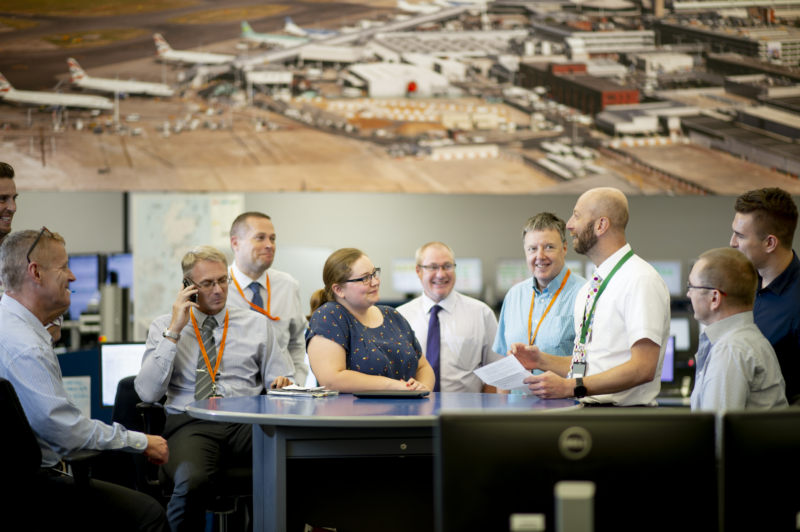The unsung heroes of change
9 March 2020The way air traffic flies in to and out of Farnborough Airport was recently changed, as the airport’s Airspace Change Proposal (ACP) was implemented. Most people won’t have noticed the overnight transition, but to make sure that everything went smoothly it required a huge amount of effort from people around our business. We have a constant programme of overnight transitions to our systems, to new procedures, to the technology we use to manage air traffic, and on this occasion to arrival and departure routes.

From time to time, you might hear us talk about these changes. What we rarely talk about, is the work that goes on behind the scenes to deliver the end result. Every change is broken down into elements, all managed by different teams – from safety experts to engineers who work closely to put their individual puzzle pieces together. These teams must ensure they deliver their pieces of the puzzle on time so that projects don’t slip, and airspace changes can always be delivered on the date that has been planned.
With an ACP like Farnborough’s, the process starts with an airspace design, often created several years ahead. Potential designs are run through a series of simulations to see how they might work in an operational environment so that essential changes can be made early on.
Up to five months before transition, the final design is handed to a team of adaptation and test experts who put it through its paces. They’ll consider how the design might work on each individual air traffic management (ATM) system we use to manage air traffic and check that what has been designed is feasible for our current operation and controllers.
The transition team play another crucial role. They look at how the systems at our Control Centres and airports are impacted by system updates and ensure that we have the right people to safely make those changes. They create a detailed plan for the night of transition which includes tasks that must be delivered every 15 minutes and the number of engineers required.
On the night, the team are under huge time pressure. They have less than two hours to upgrade individual systems, test their functionality and make changes as necessary.
And if you’re wondering why we only ever have less-than-two hours, it’s because we manage air traffic over the Northeast Atlantic Ocean, and our systems must be back up and running before traffic from the United States arrives in UK airspace, between 3am and 4am.

It’s easy to forget that all of this is happening while our 24/7 operation continues. The transition team must make sure that as upgrades are being completed, controllers can continue to safely manage air traffic. This means controllers physically moving around the Ops Room to different workstations – as many as three times!
Once the change has been implemented into the operation, it is in immediate use and closely monitored for around 24 hours.
The airspace change for Farnborough was successfully deployed without causing any delays despite last week’s awful weather conditions proving an additional challenge.
Every single one of our changes follows a procedure much like this. If you’d like to find out more about some of the changes we’re working on, from changes to our airspace structure to the technology we use to manage air traffic, take a look at nats.aero/airspace
Comments
Please respect our commenting policy and guidelines when posting on this website.

11.03.2020
21:39
Seán McErlean
Congrats and very insightful post.
16.03.2020
10:46
Binny
Fantastic article Stuart, and I can vouch for the amazing job the team perform in advance of, and during, the overnight transitions. The Farnborough ACP was incredibly challenging for so many different reasons, but the service provided by the CAS Team was exemplary once again.
Many thanks